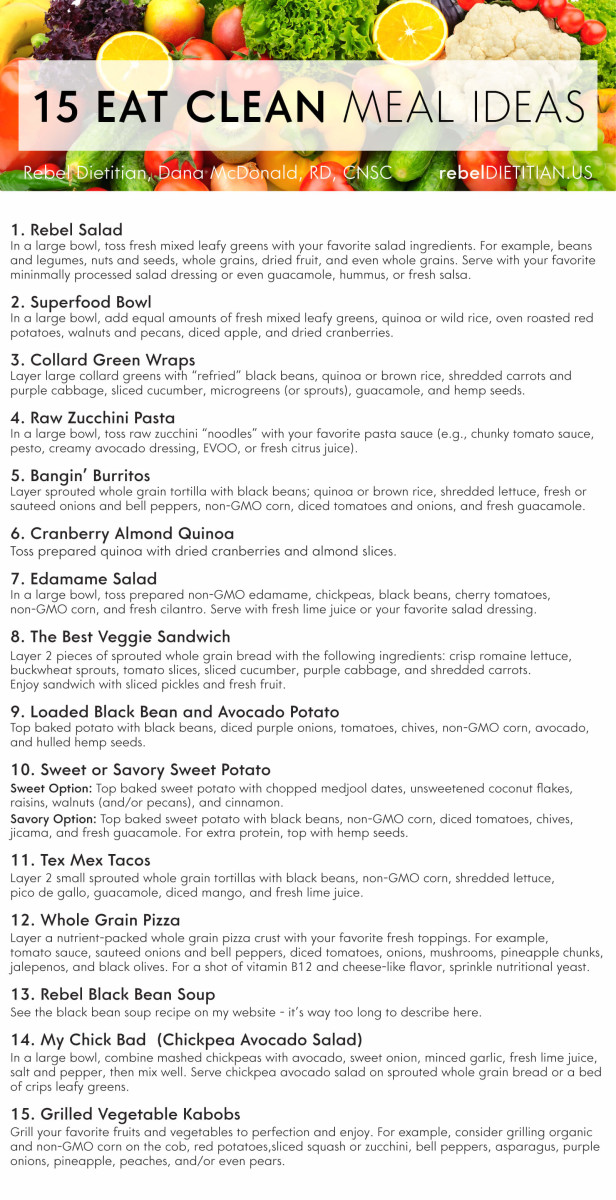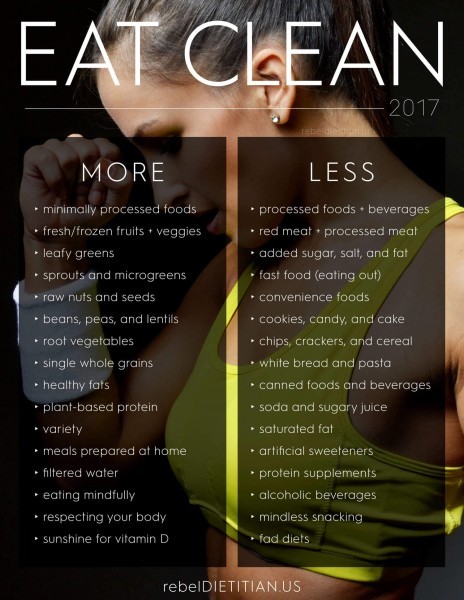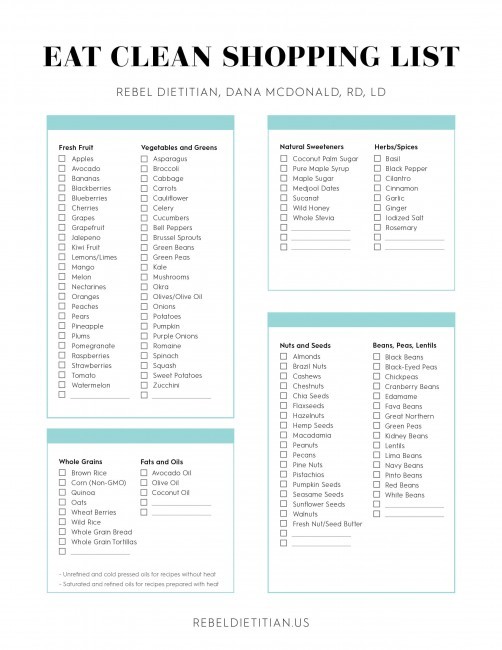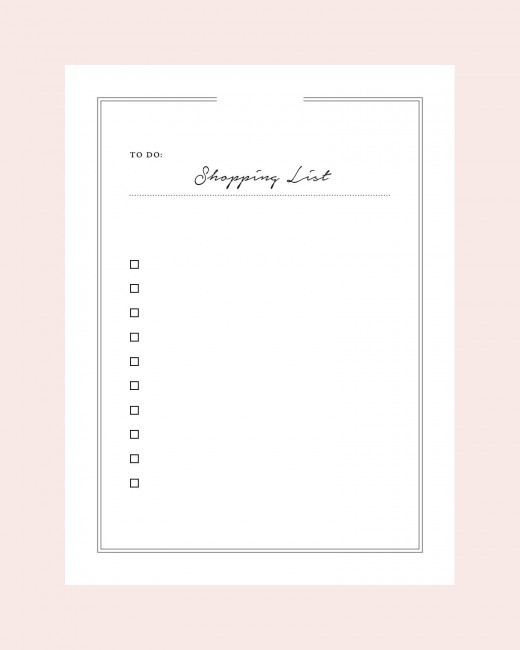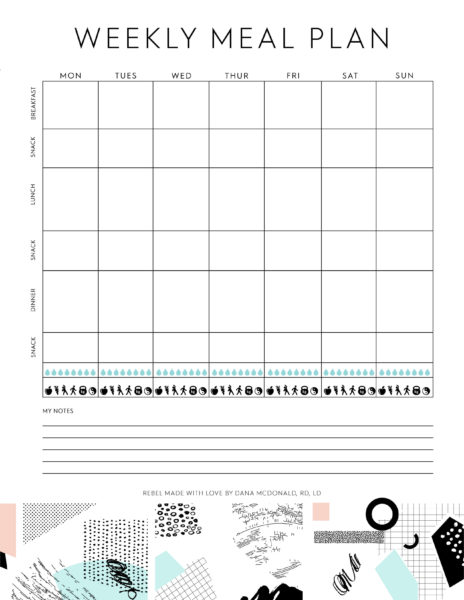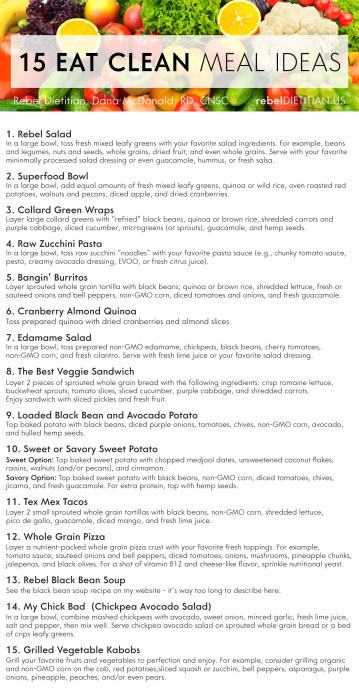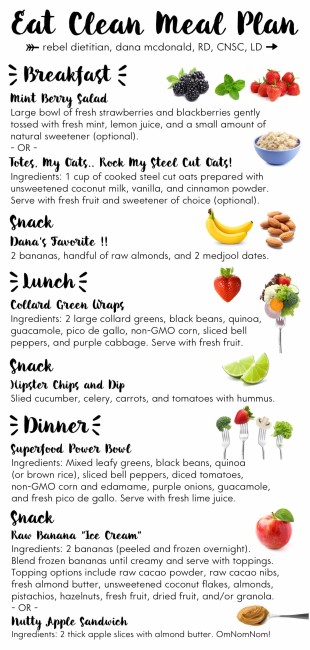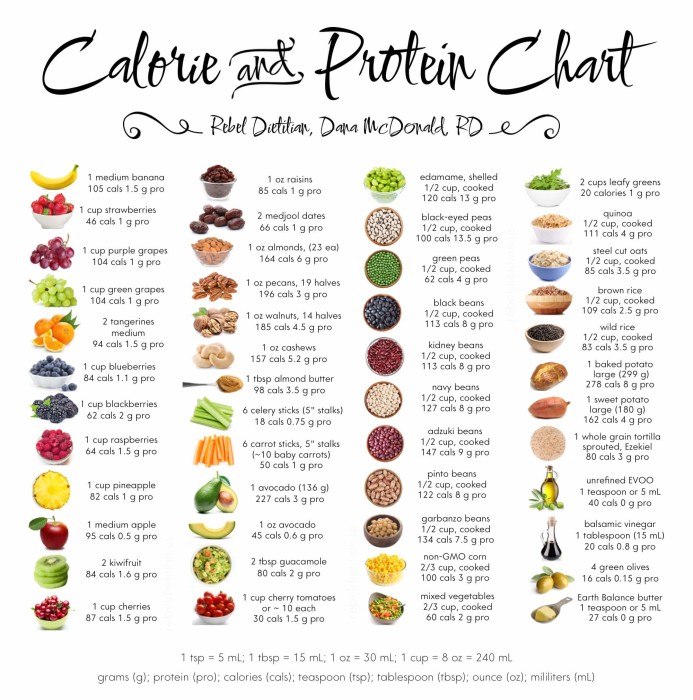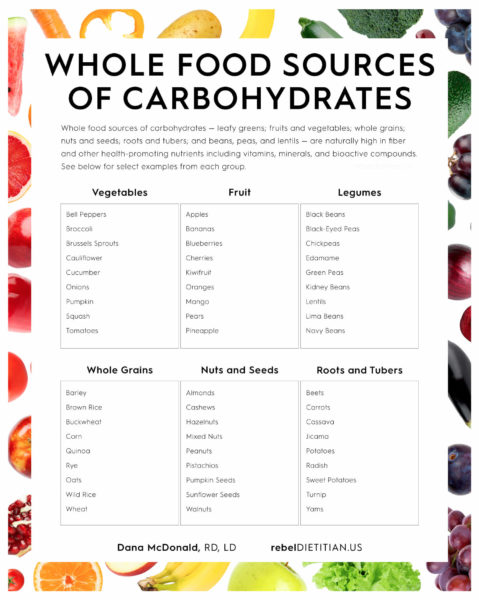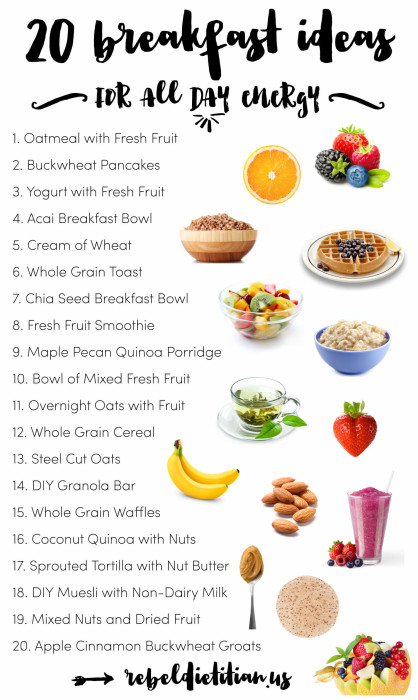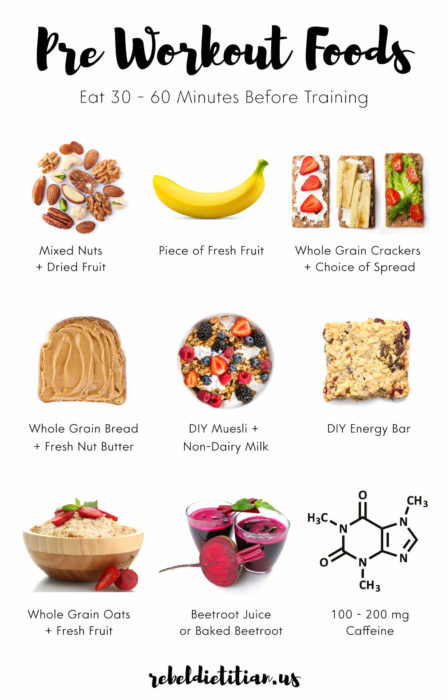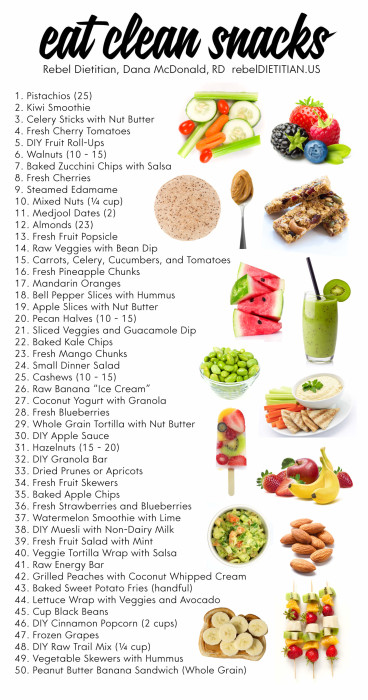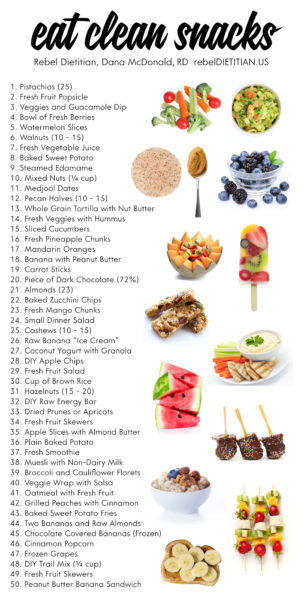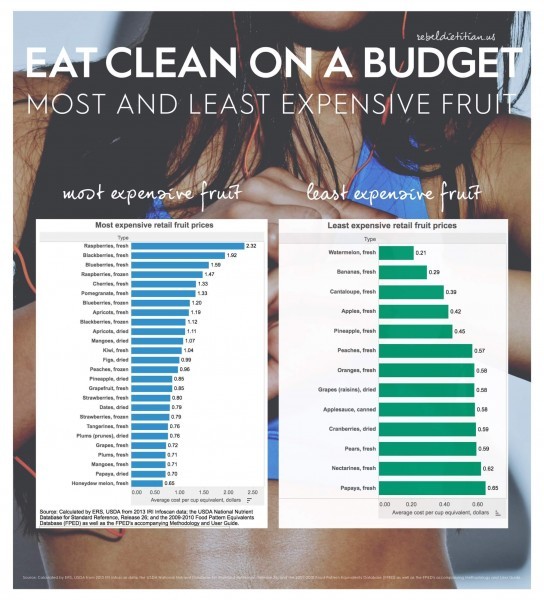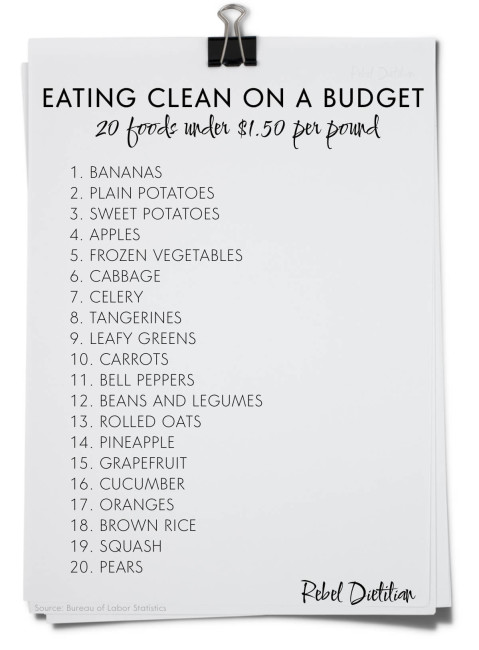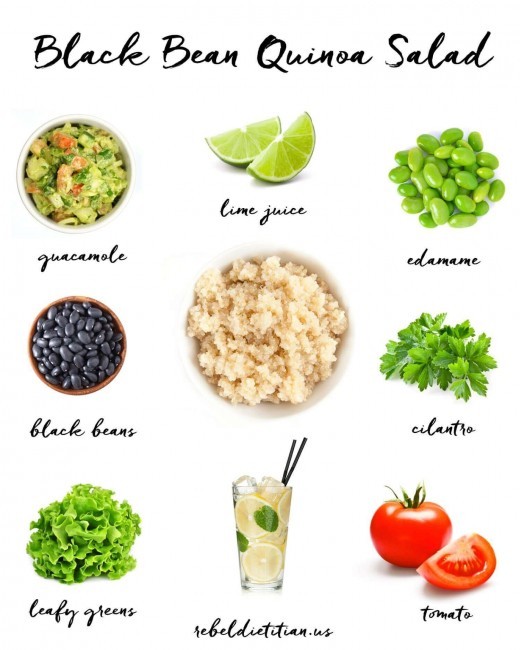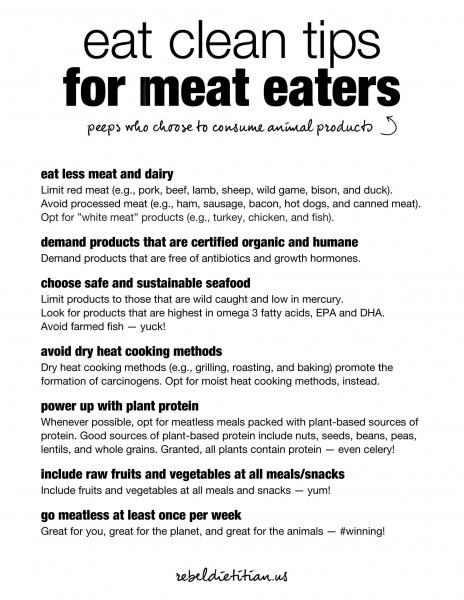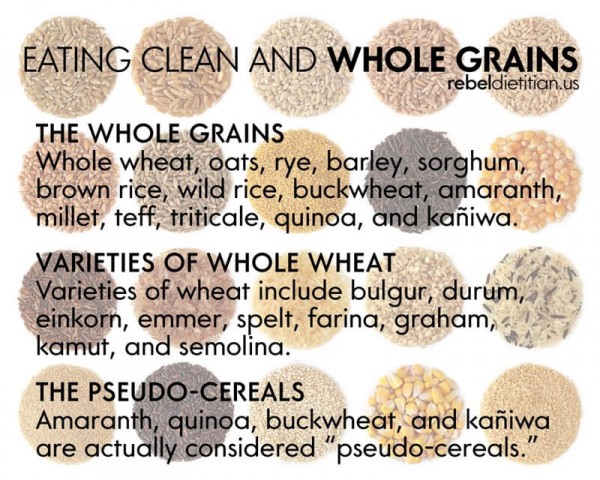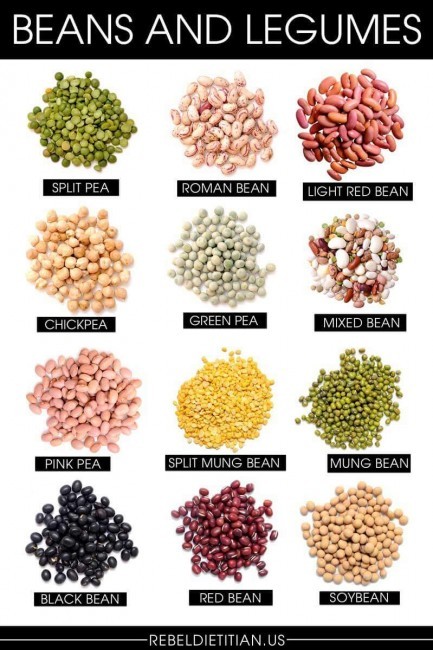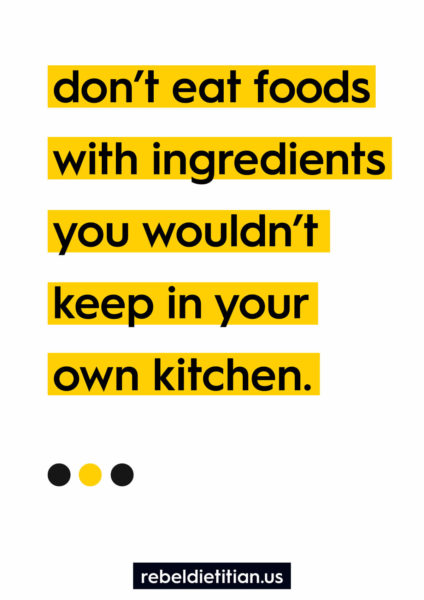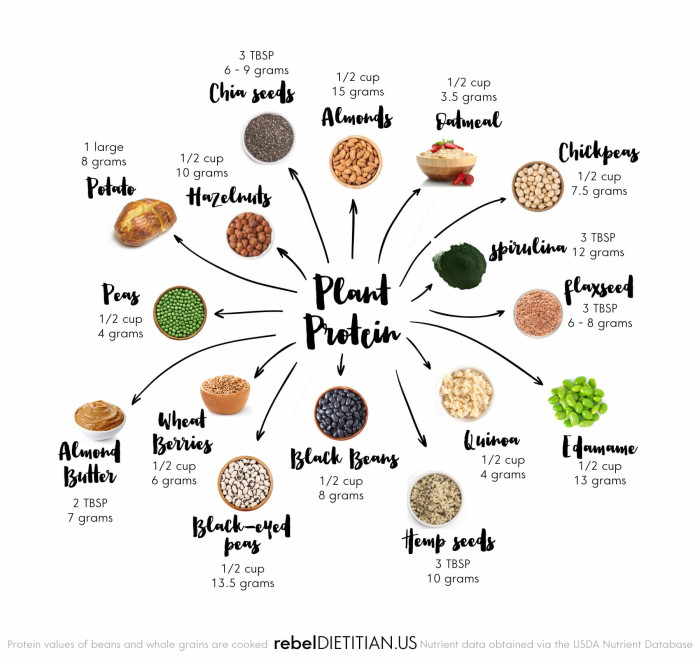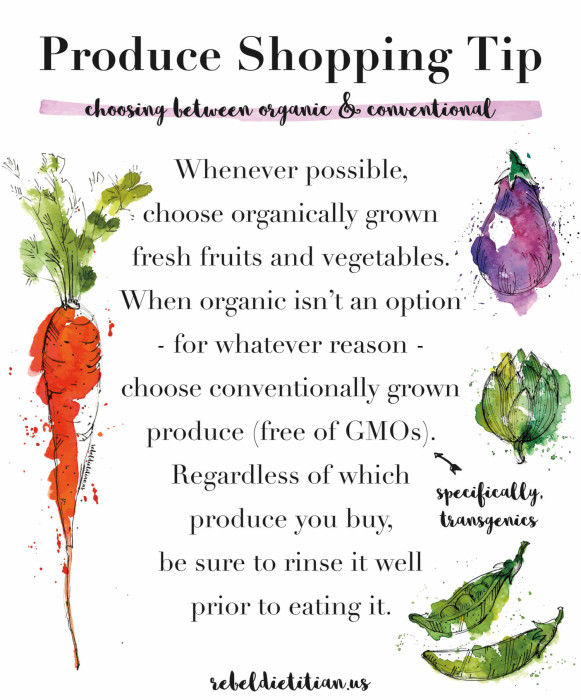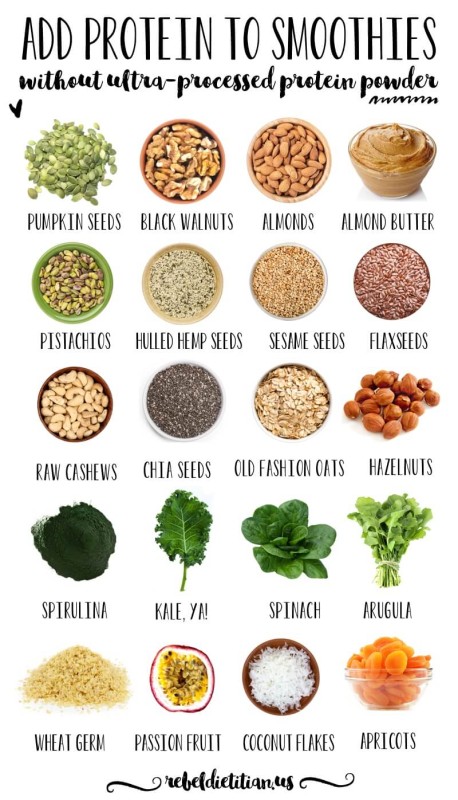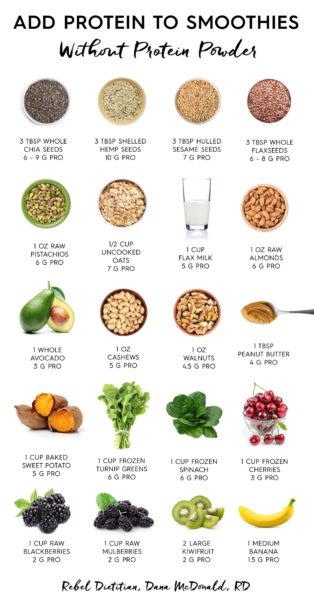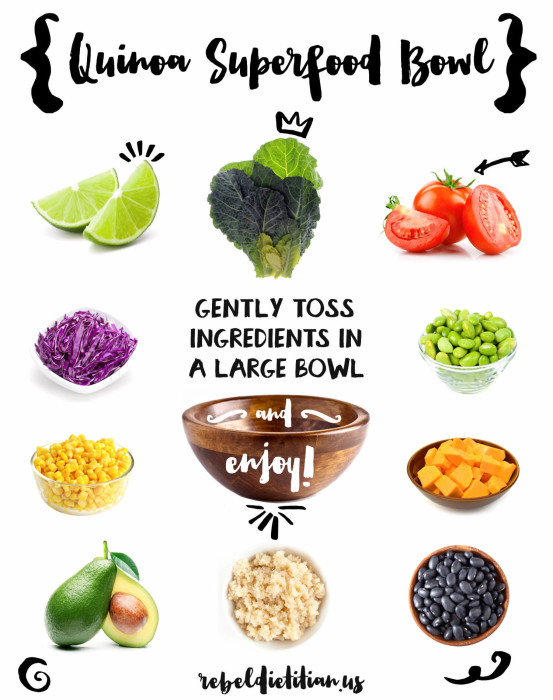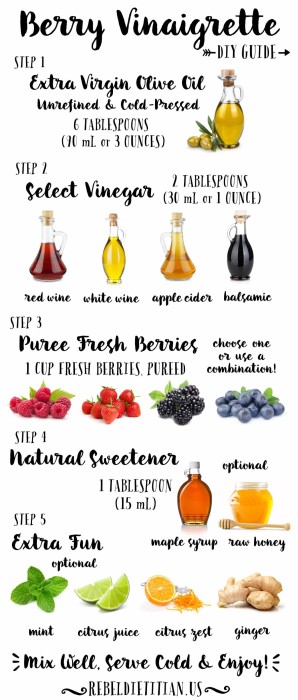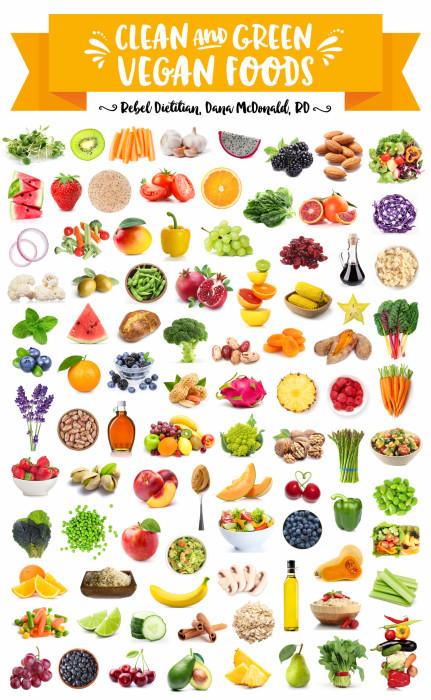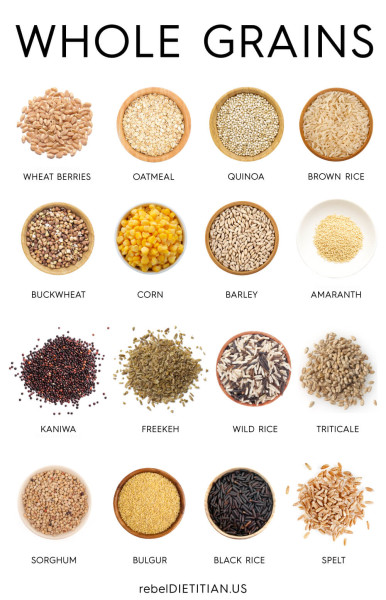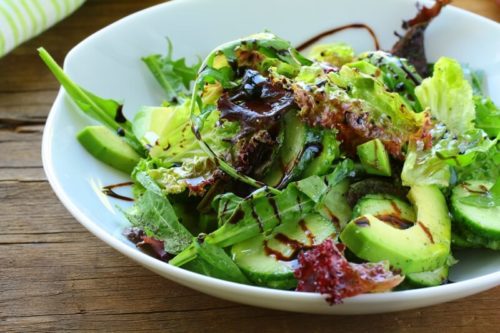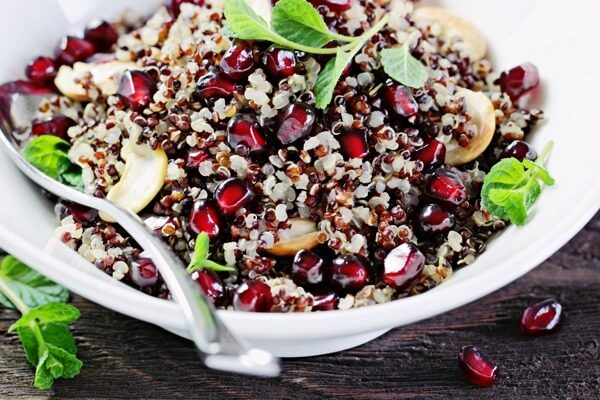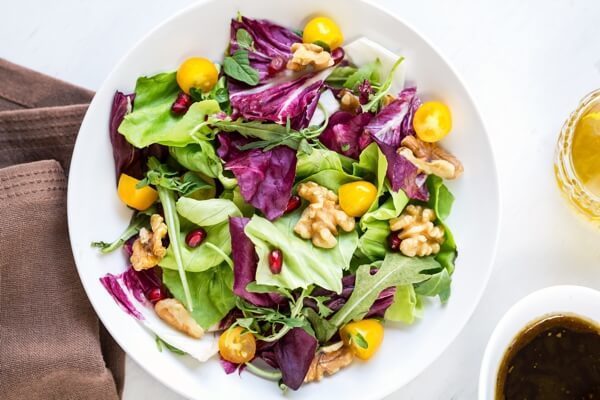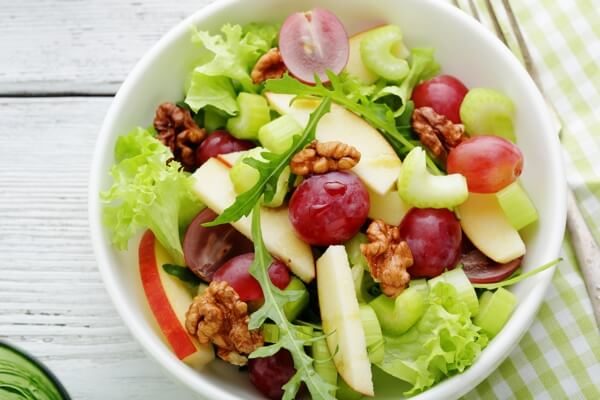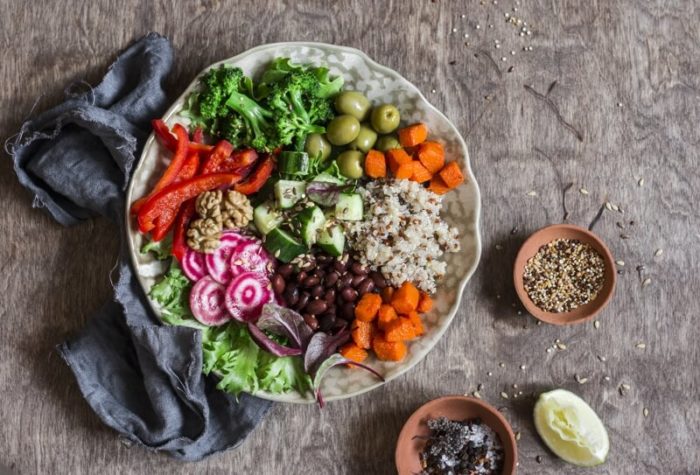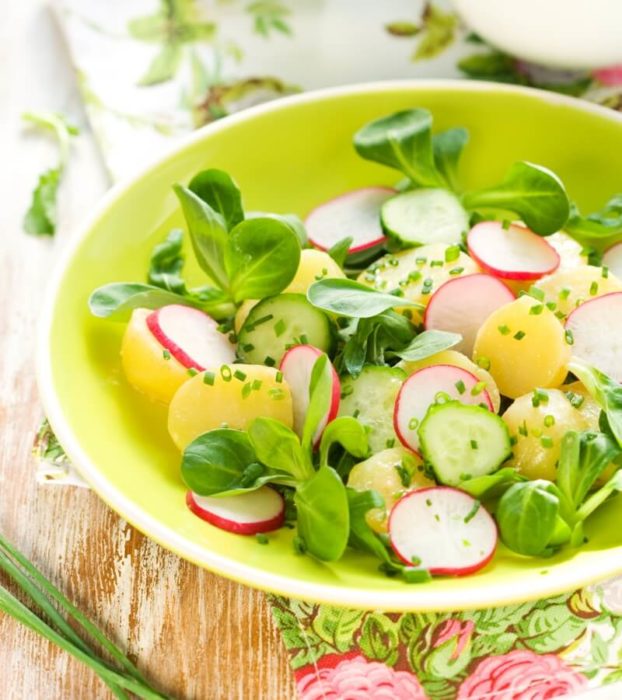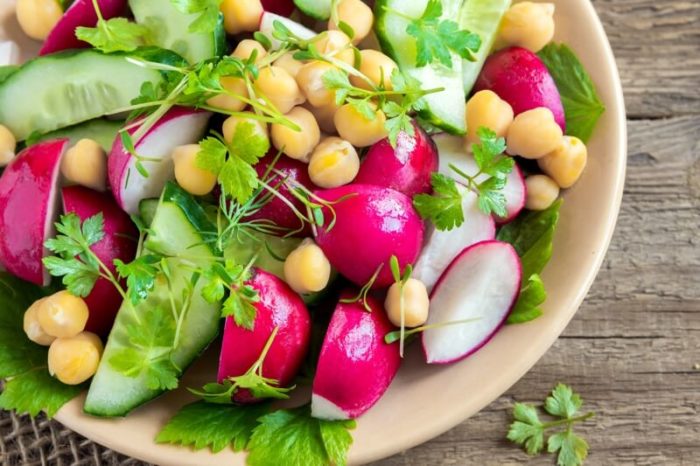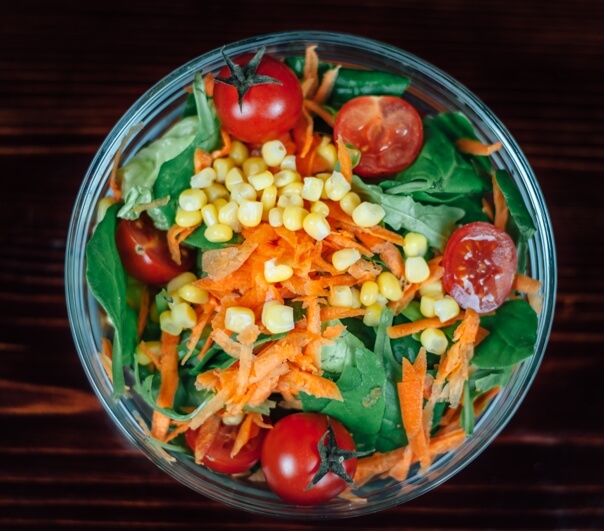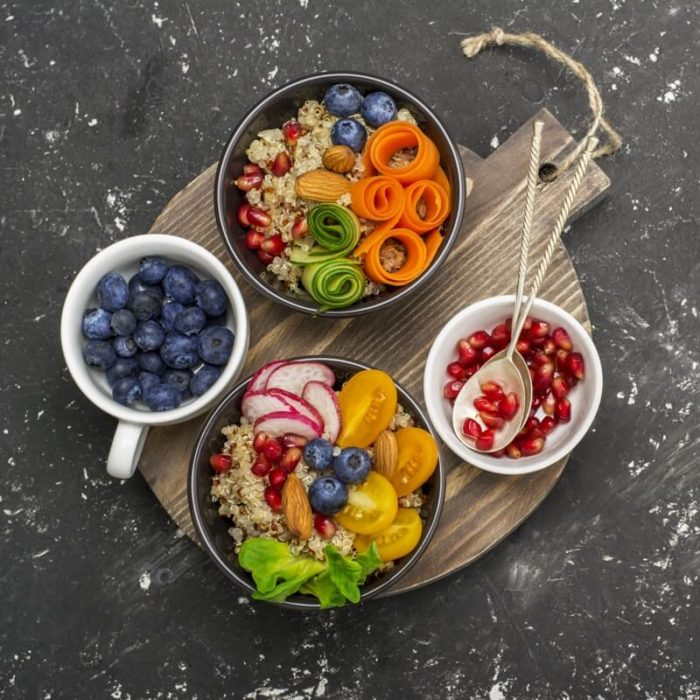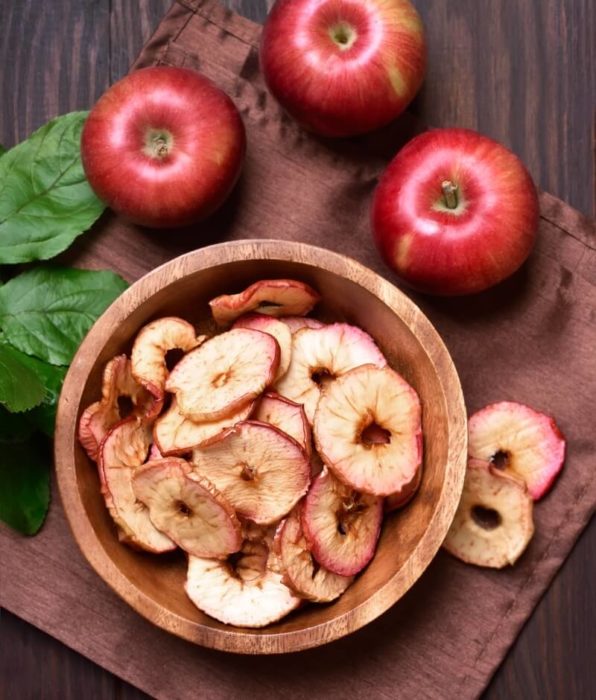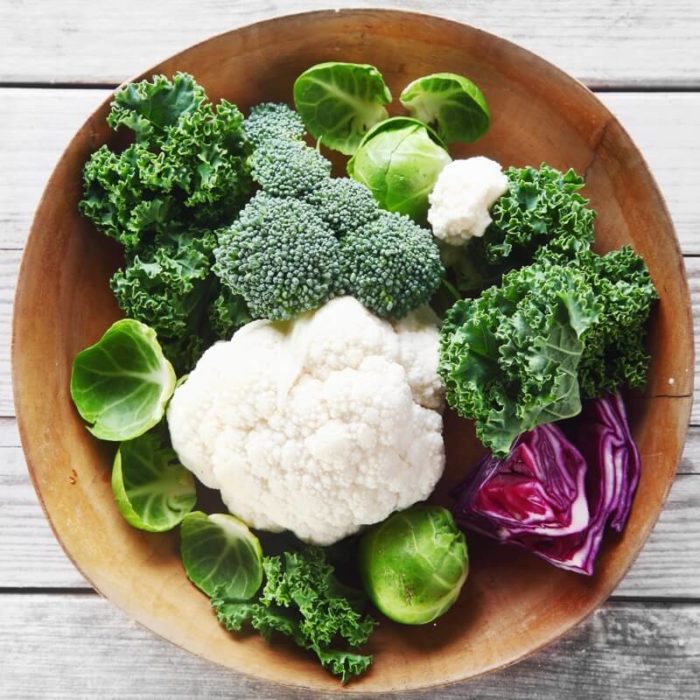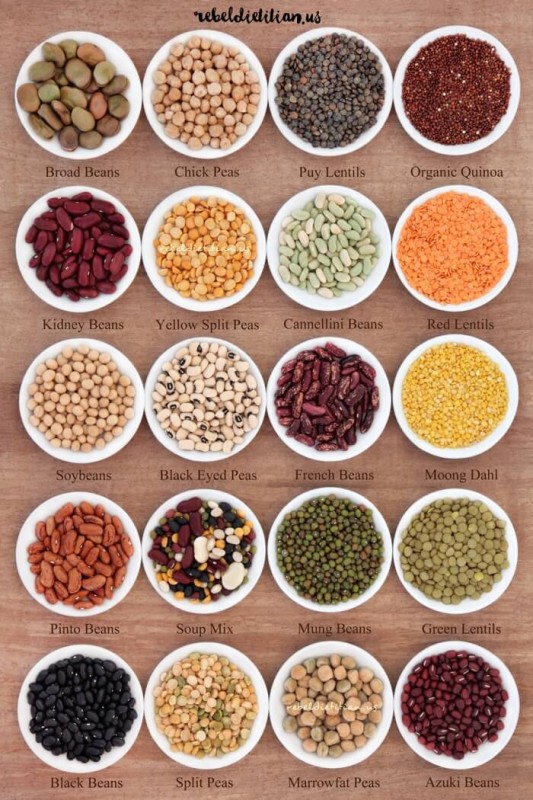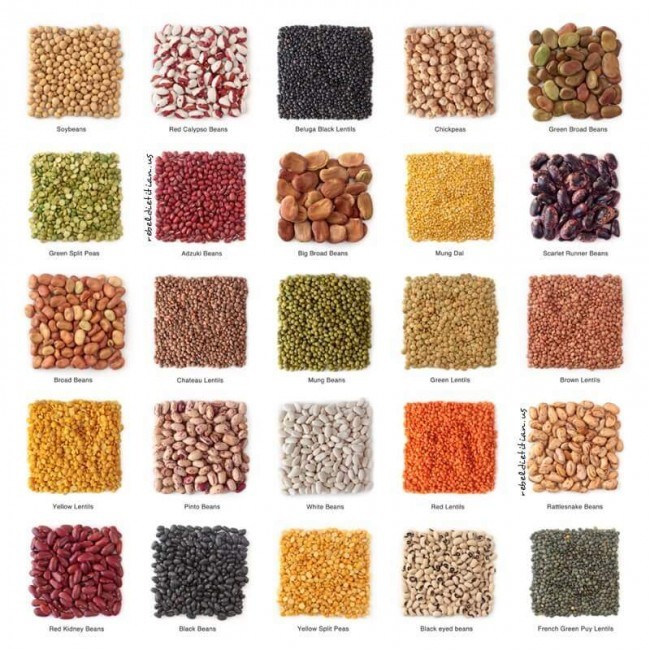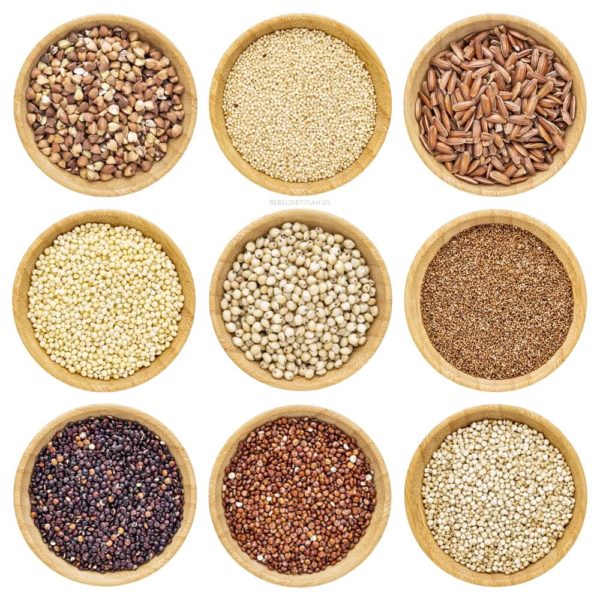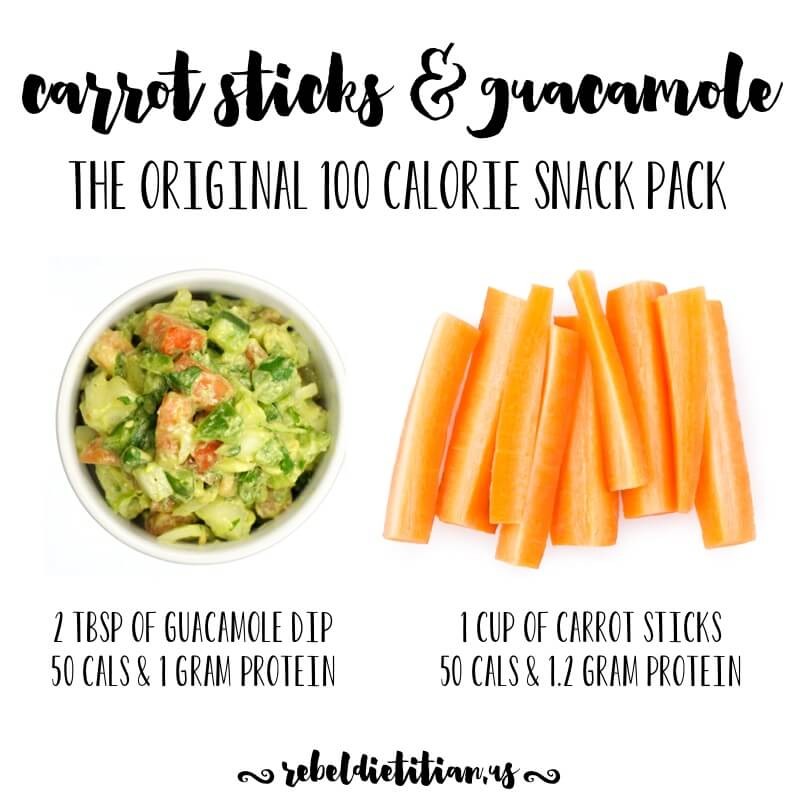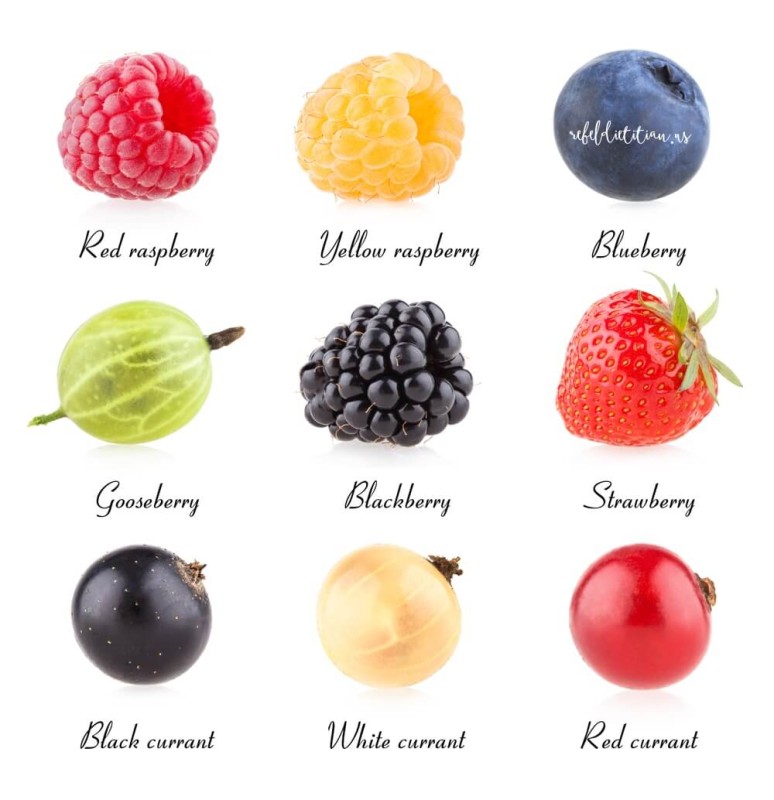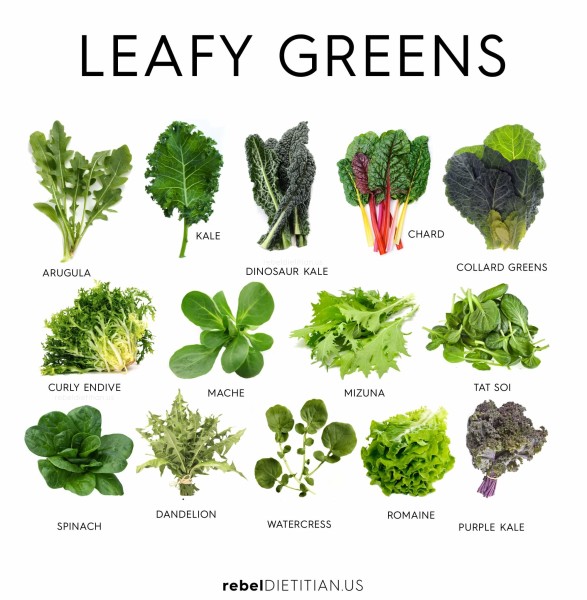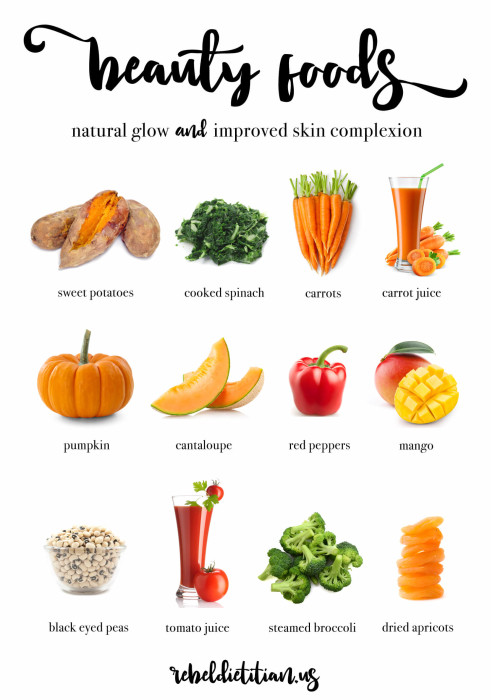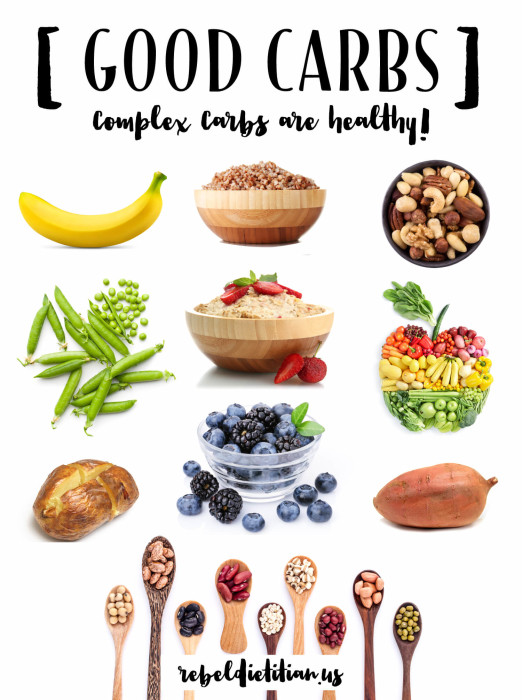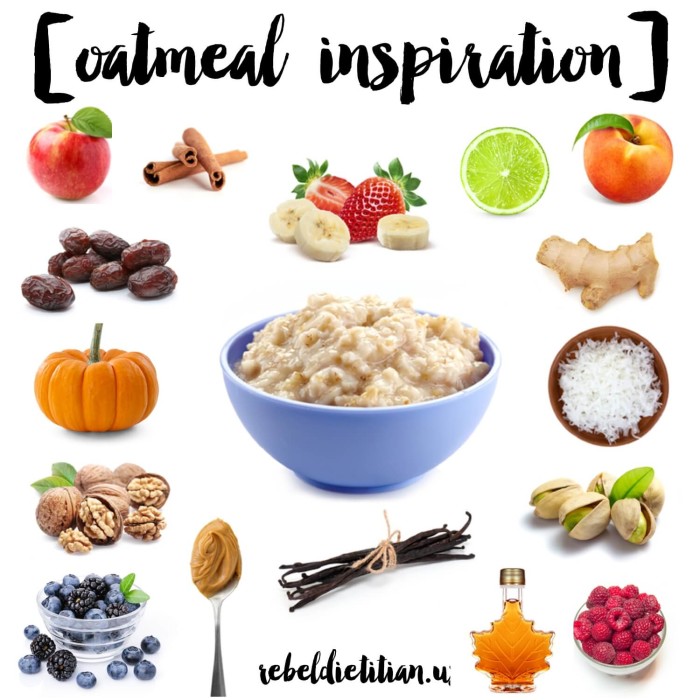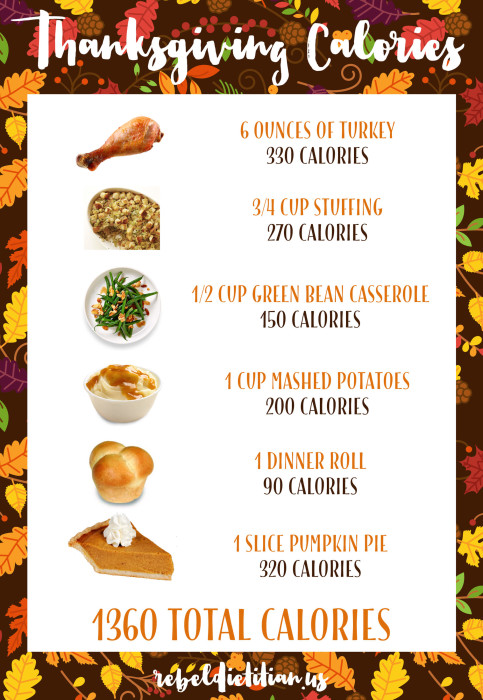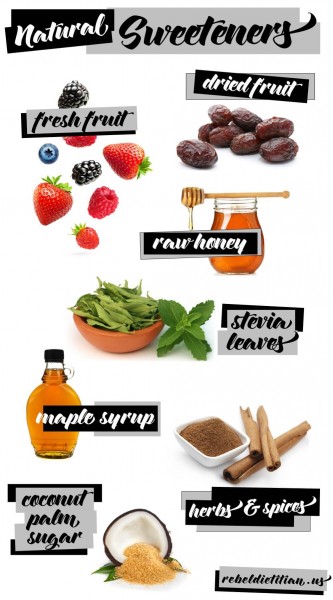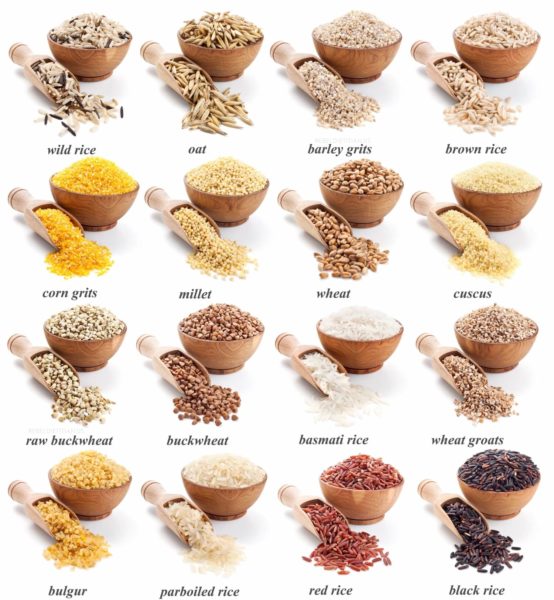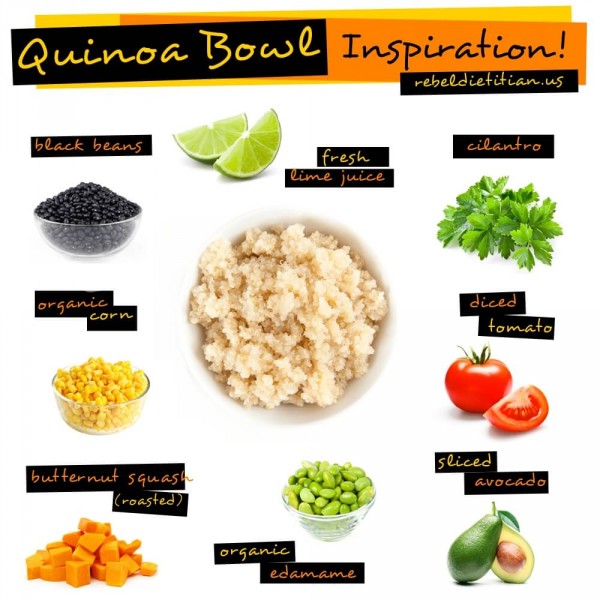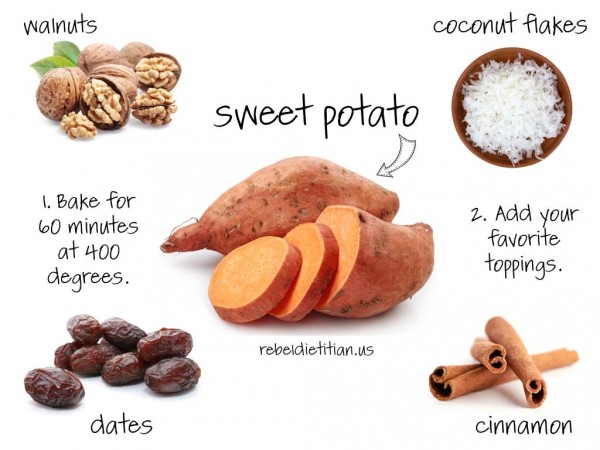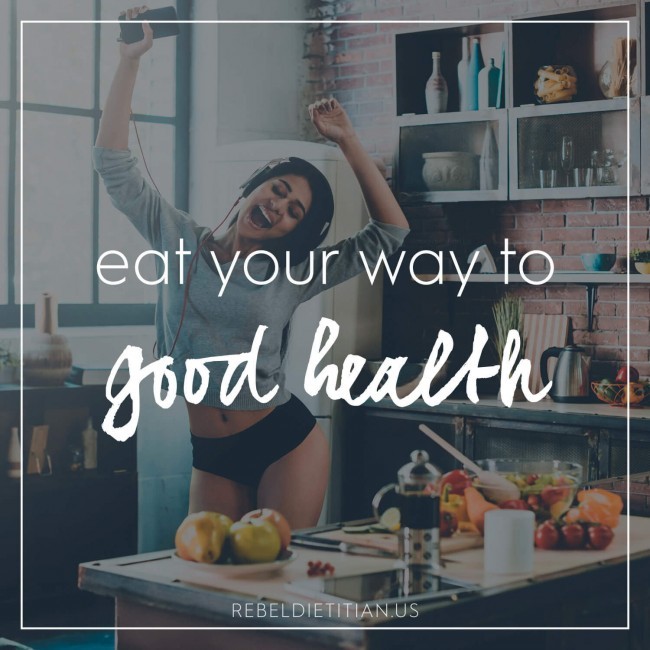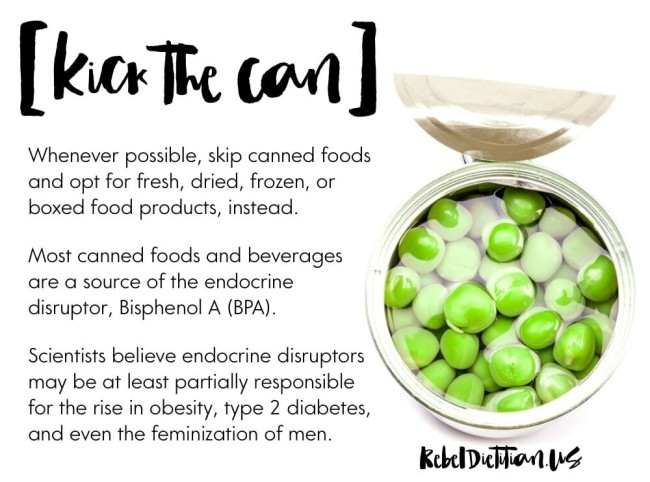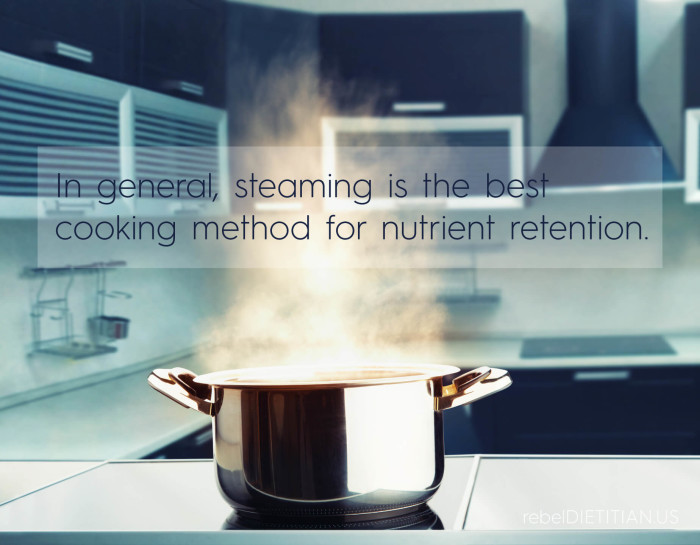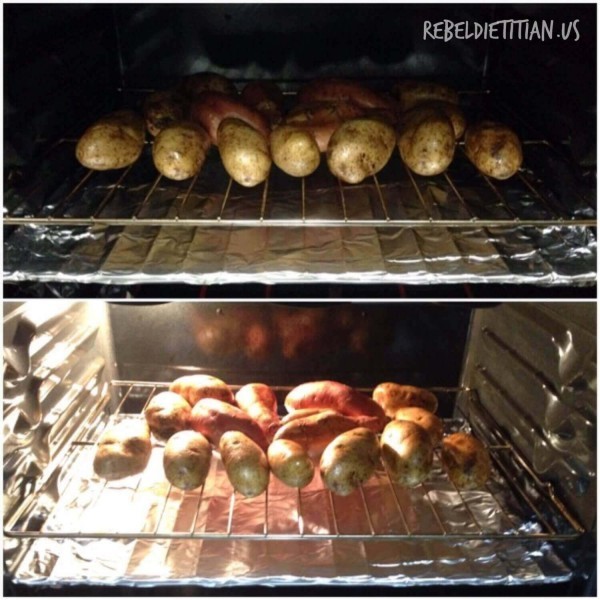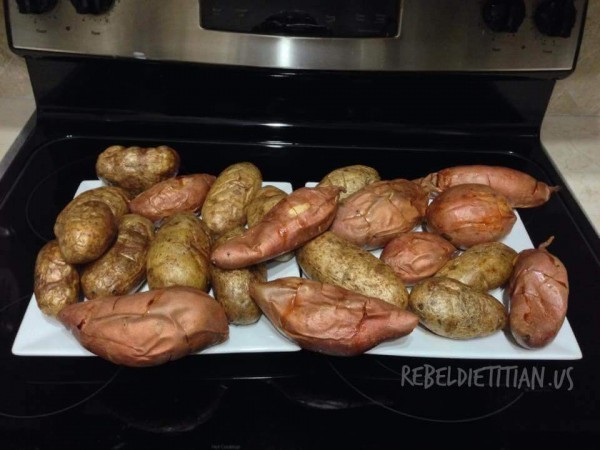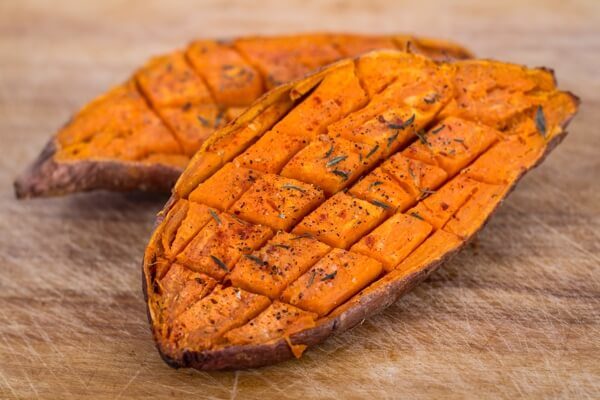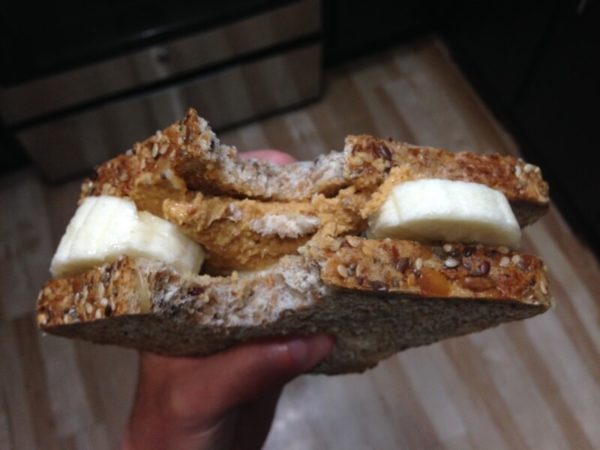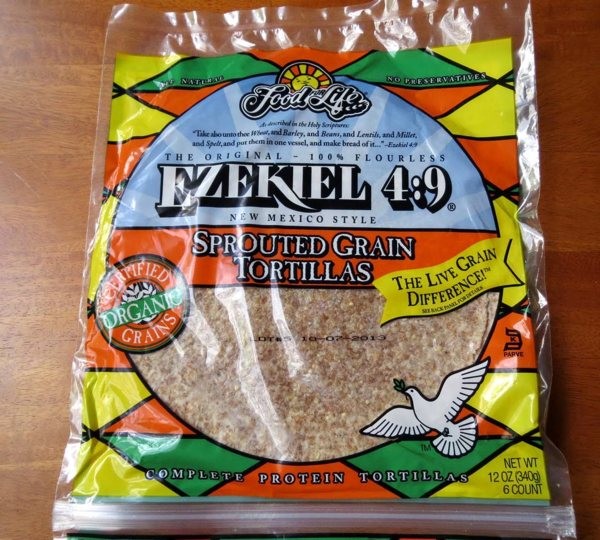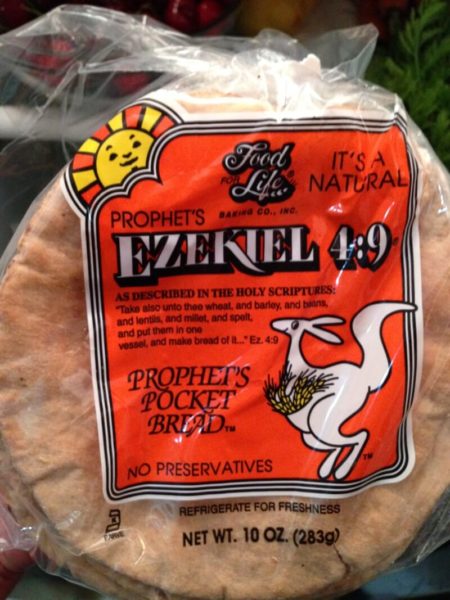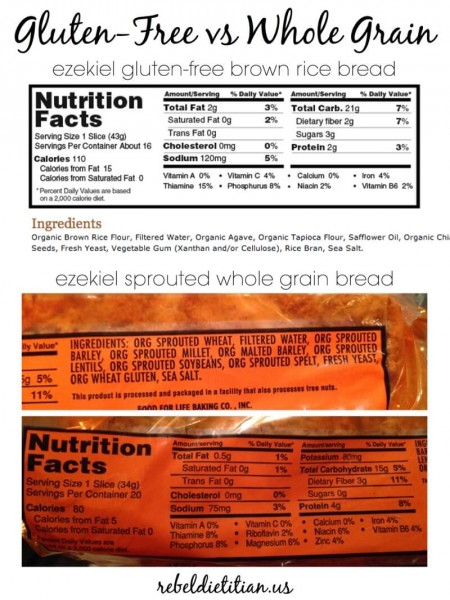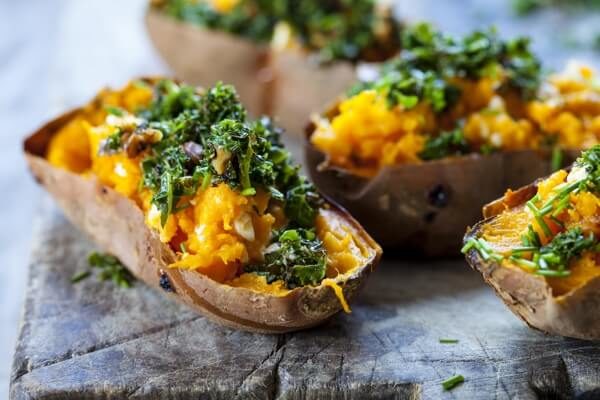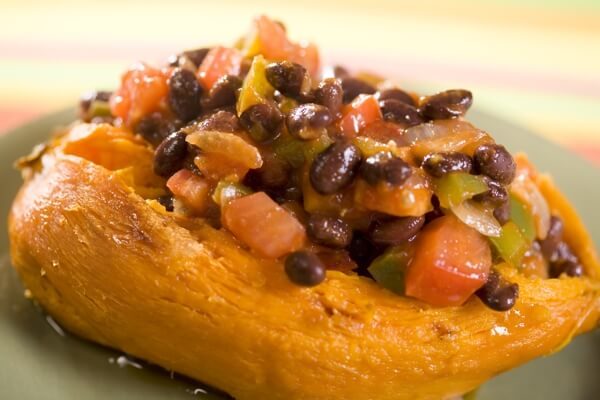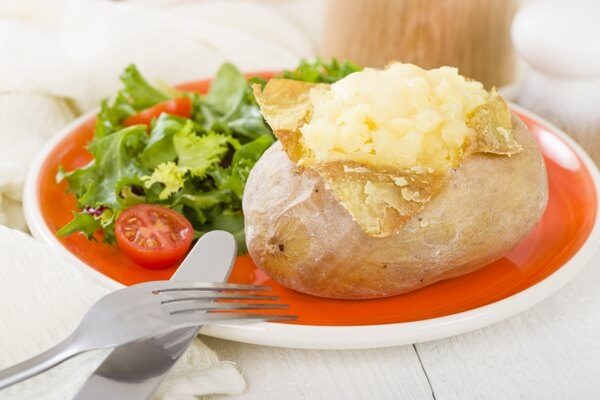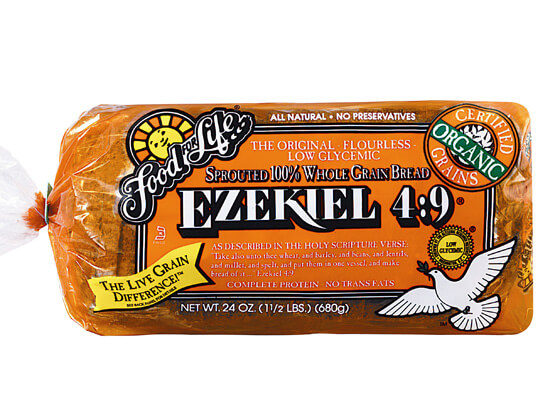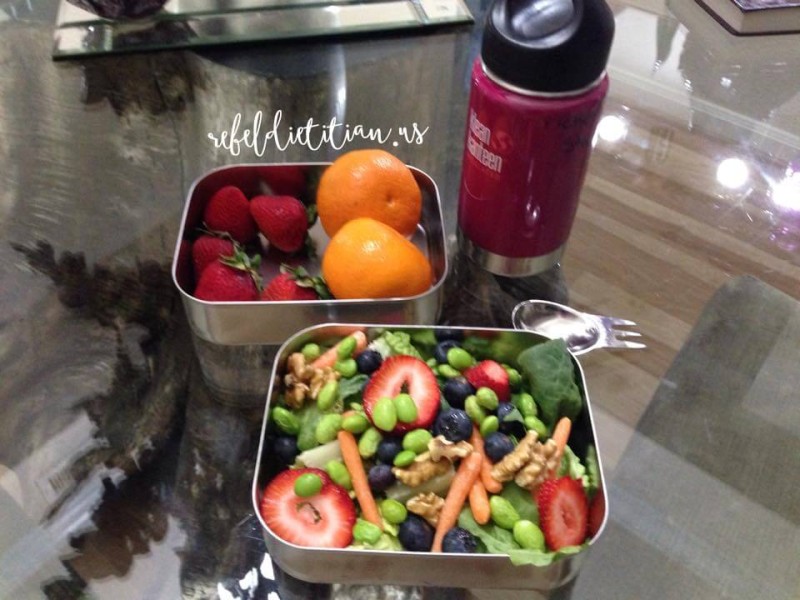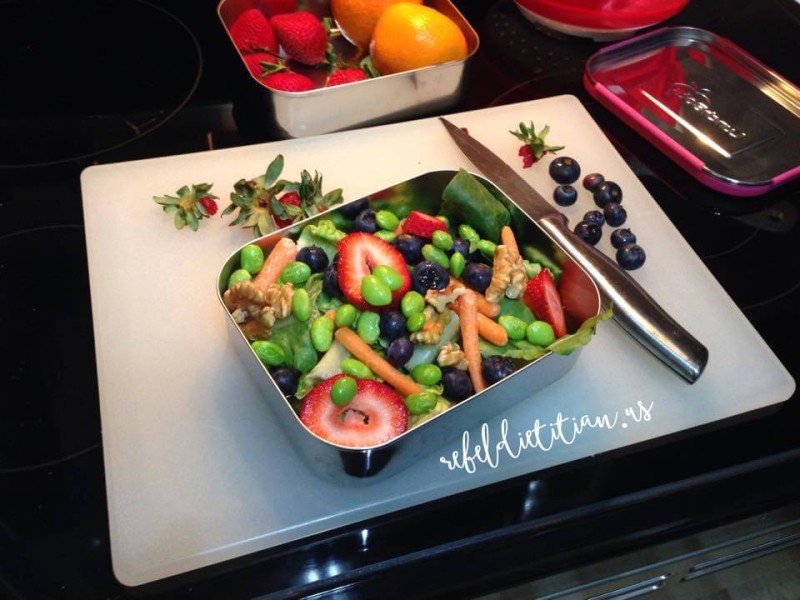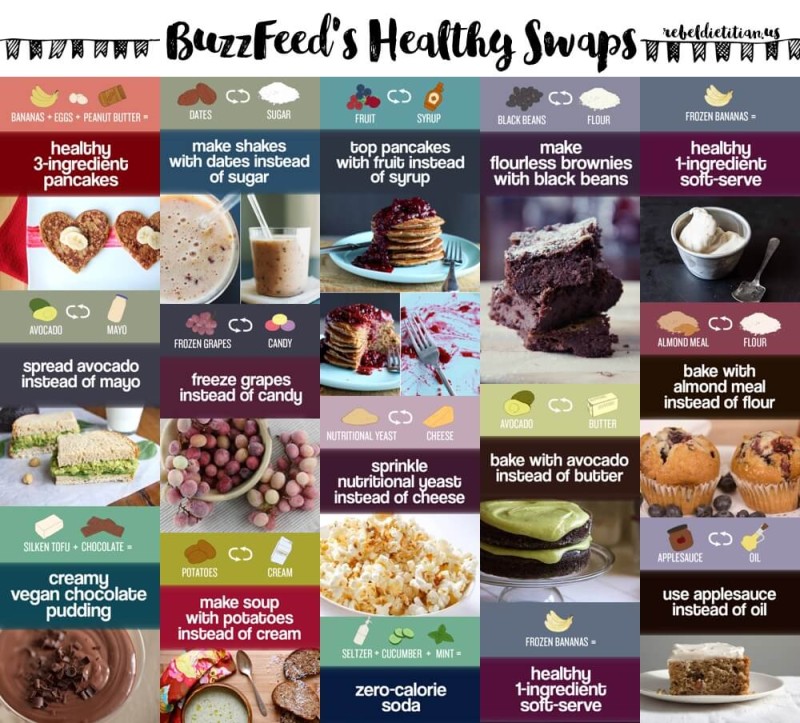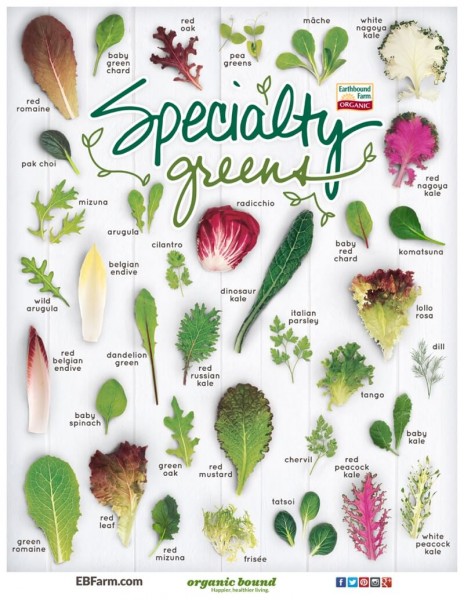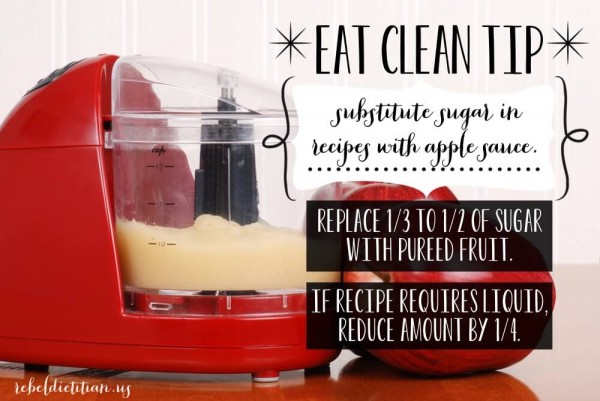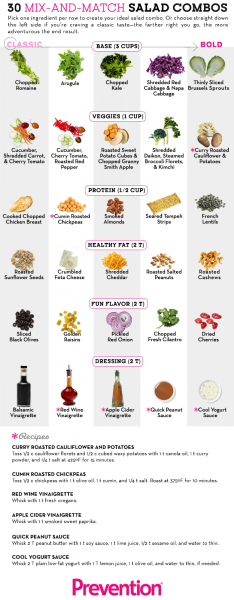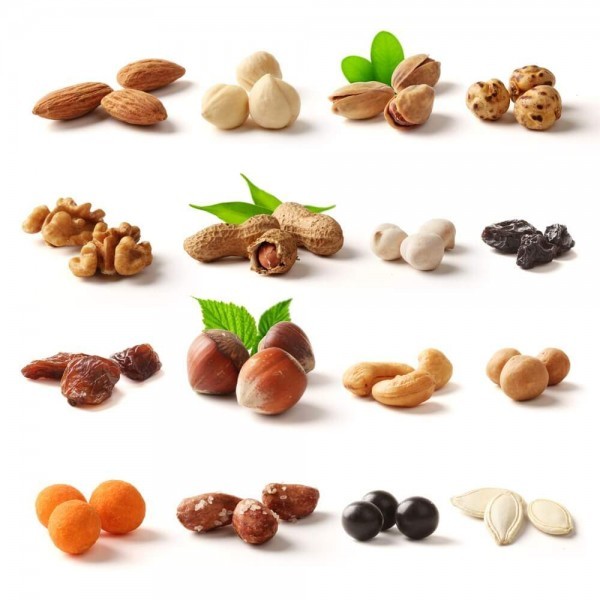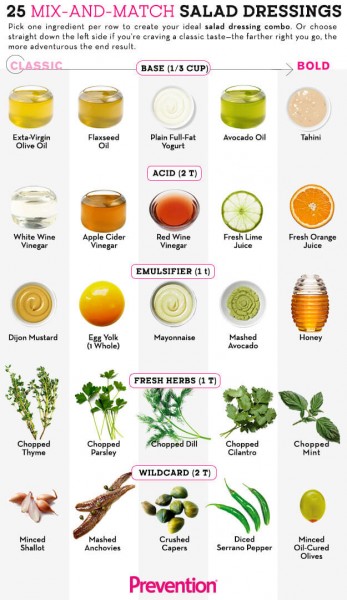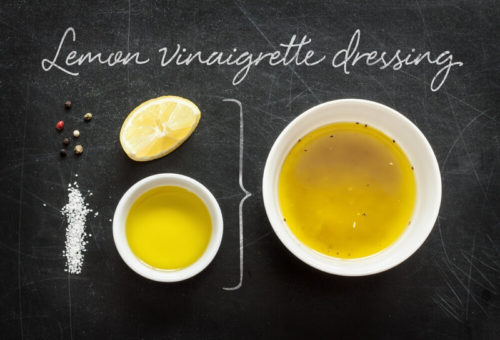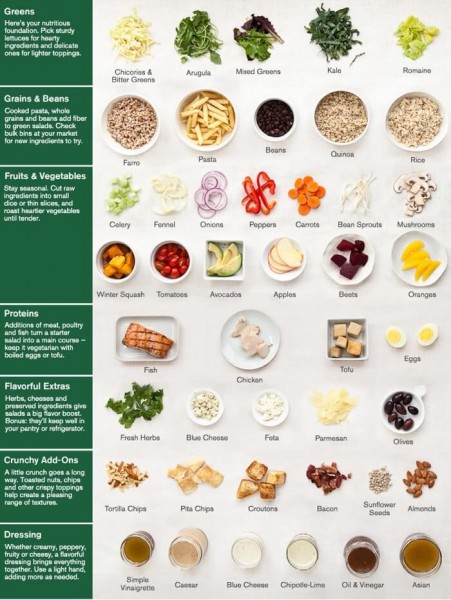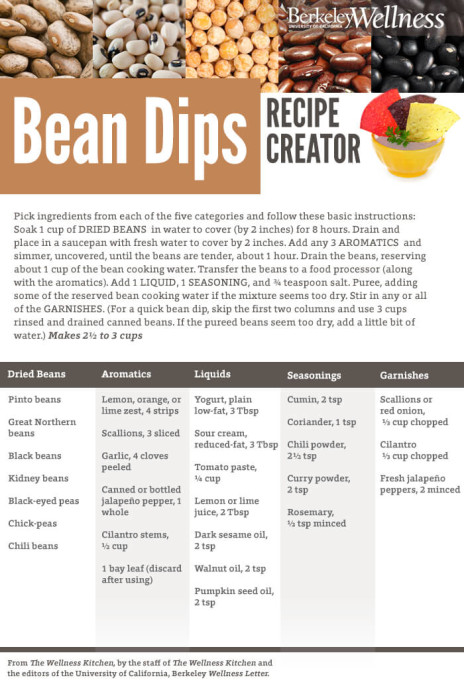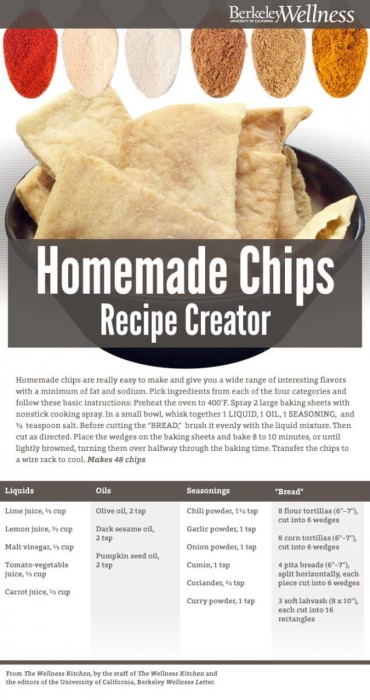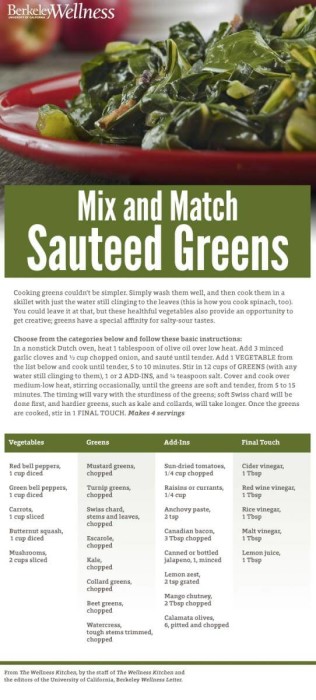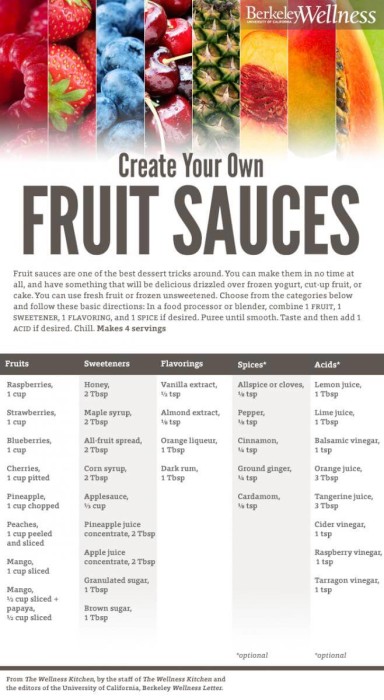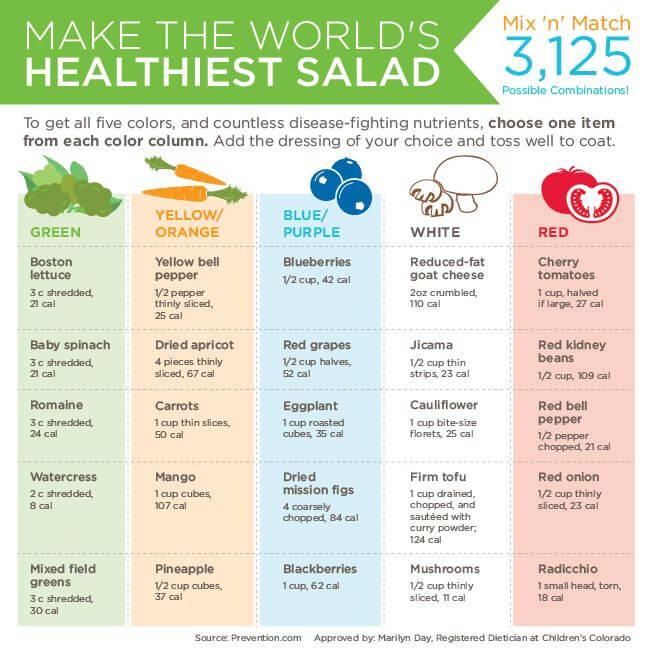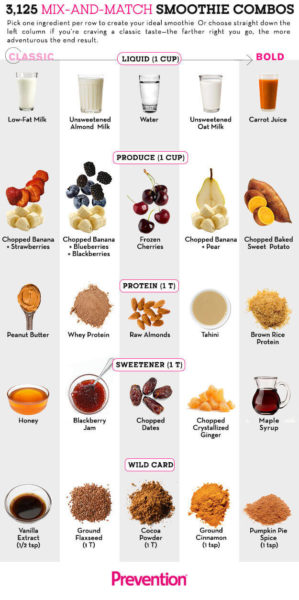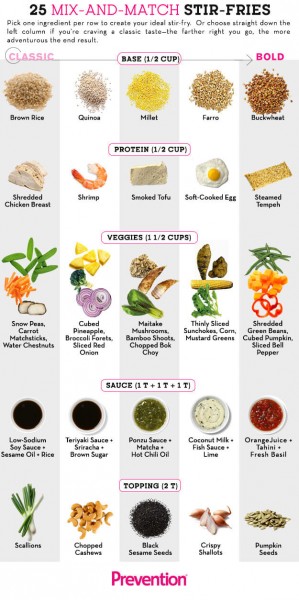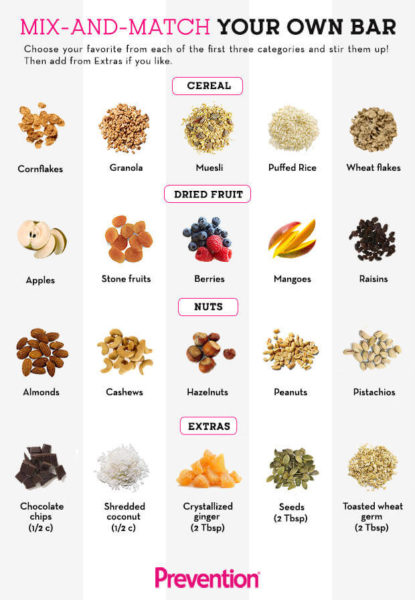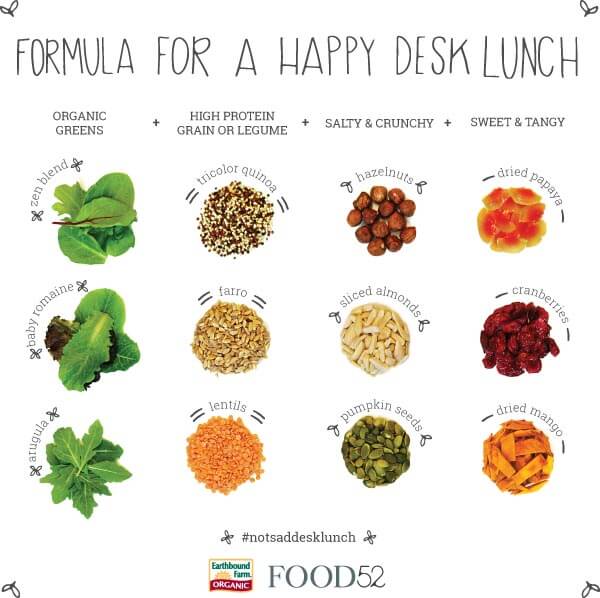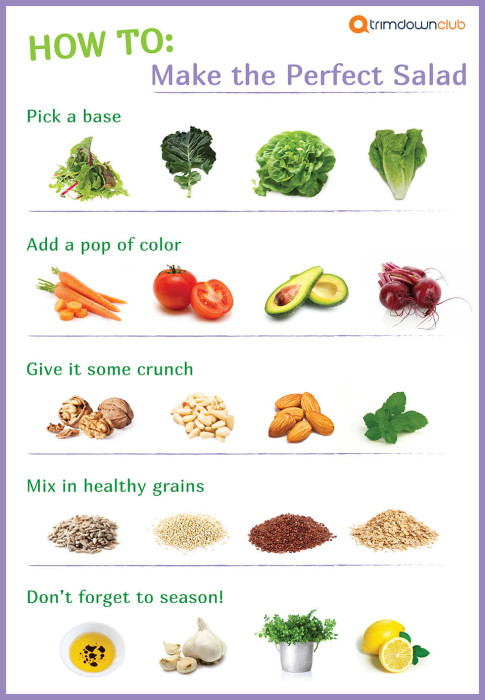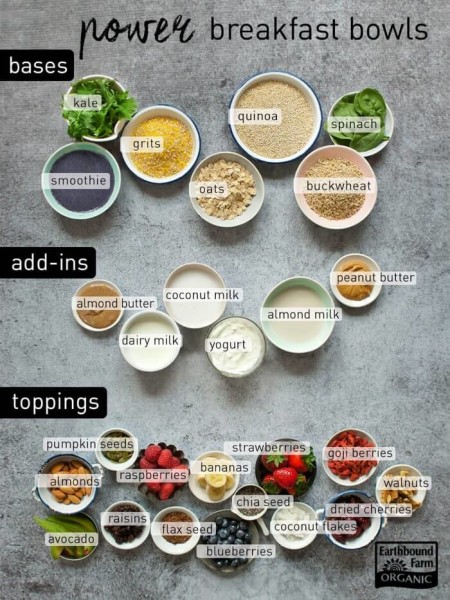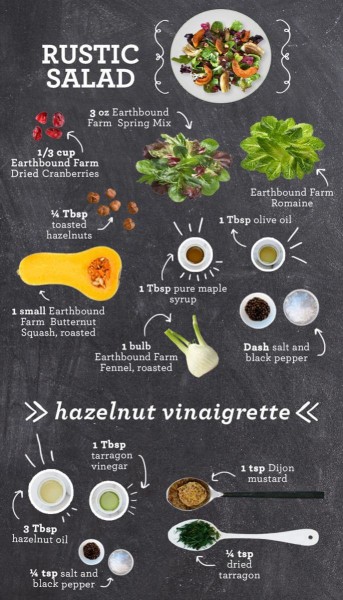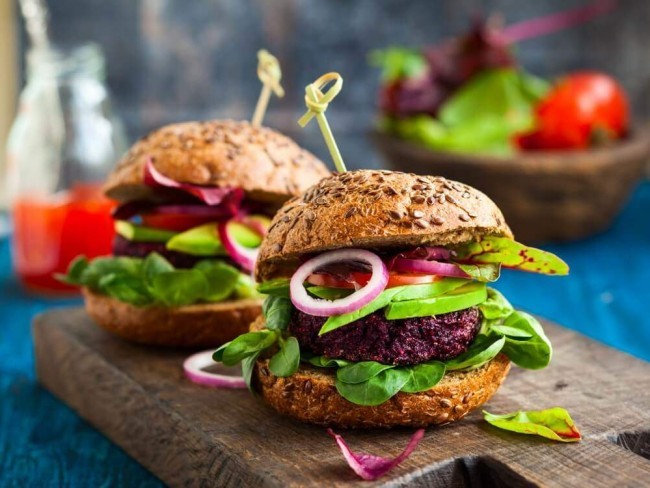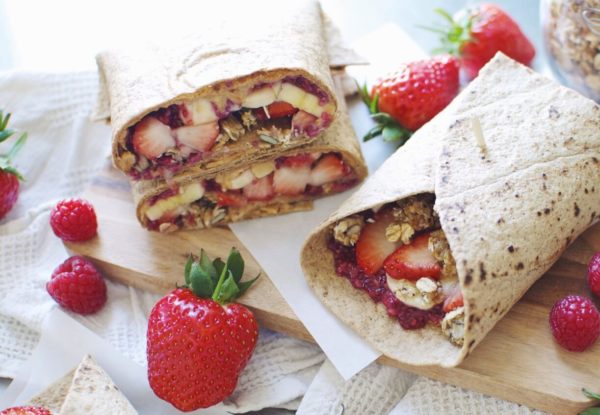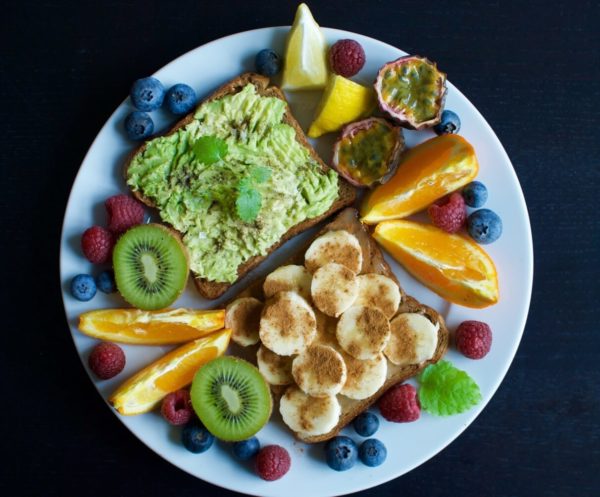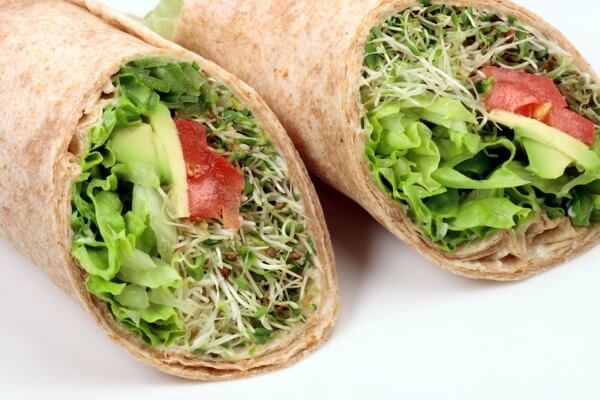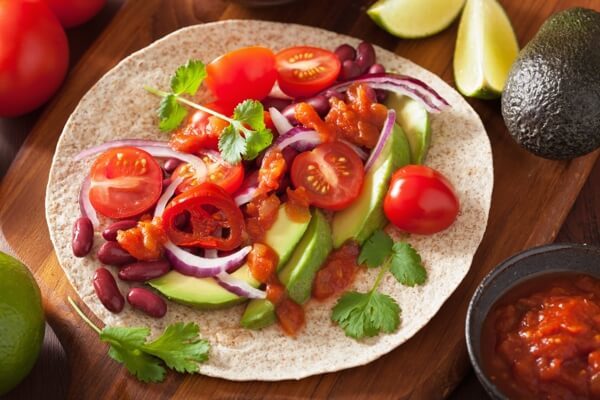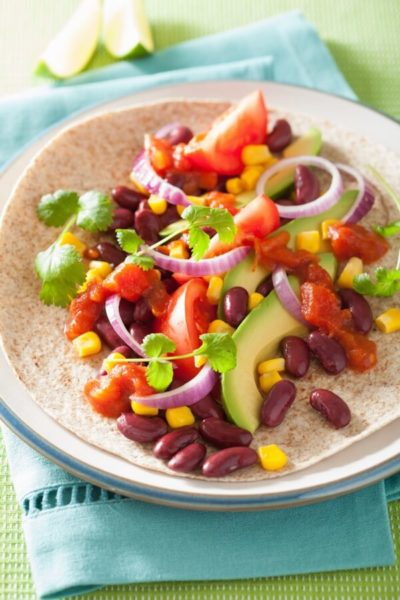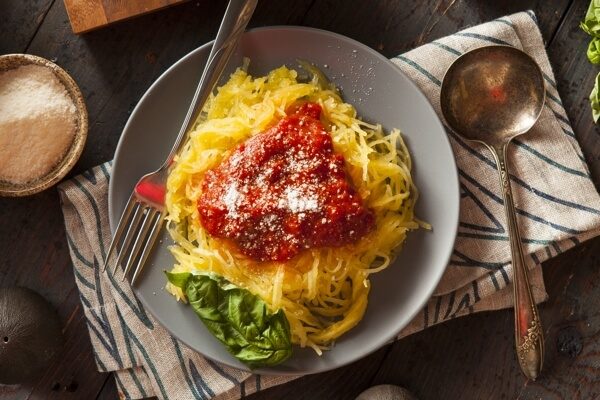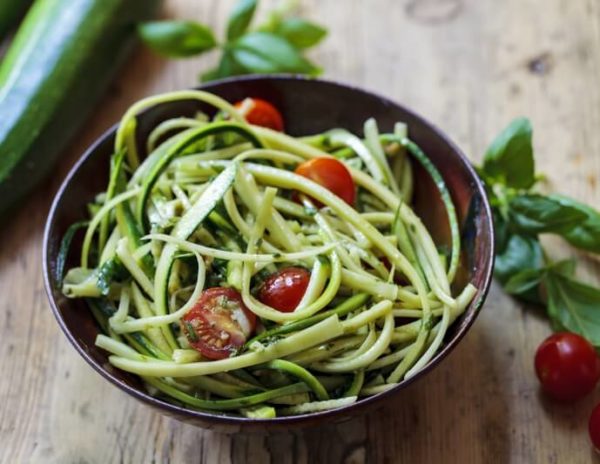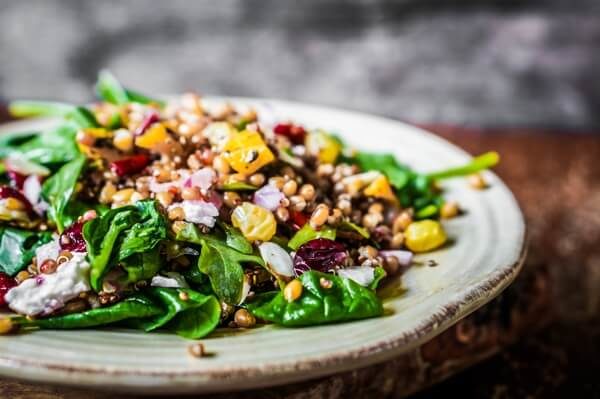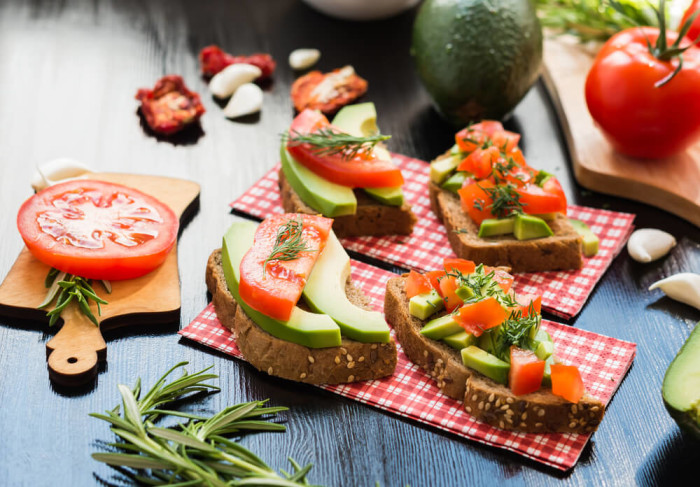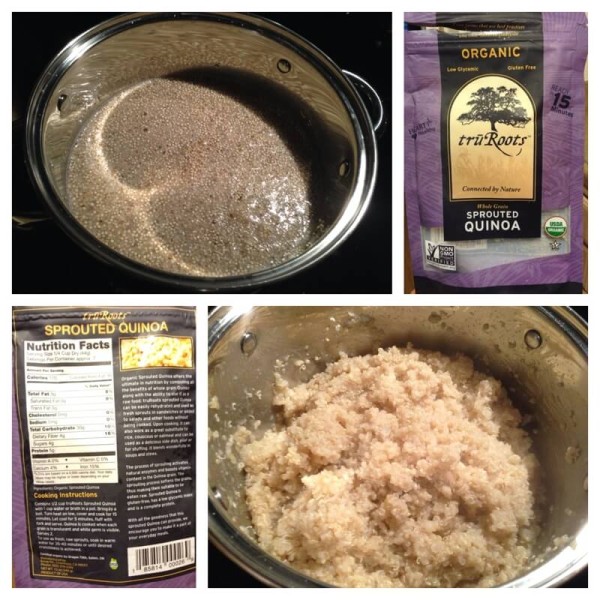When you limit ingredients to a handful of real, whole foods — plus fresh and/or dried herbs and spices — meal preparation doesn’t become a full day event. For the most part, I don’t use recipes to create meals. I simply mix my favorite raw and/or cooked ingredients together and call it a meal. For instance, tonight we had veggie tacos with the following ingredients: whole grain sprouted tortillas, shredded leafy greens, diced tomatoes, “refried” black beans, fresh guacamole, and whole grain rice. See what I mean? You don’t need a “recipe” for this type of meal. However, you do need to create a shopping list that contains the ingredients you’ll need for the rest of the week.
For the most part, I prepare the cooked foods I intend to include in our meals on Sunday. For example, I’ll bake 10-15 baked potatoes, a big batch of black beans, or a pot of brown rice that we can use a variety of different meals throughout the week. You can view examples of my food by visiting the page titled Rebel Grub. I also include a few in the photo gallery below.
Meal Planning Tips
-
- Create a shopping list based on the foods you plan to prepare during the upcoming week.
- Purchase food items that can be used in a variety of different recipes (e.g., fresh produce, cooked whole grains, and legumes).
- Prepare large batches of cooked foods early in the week.
- If time is a factor, consider purchasing frozen whole grains, vegetables, beans, peas, and lentils (e.g., non-GMO edamame, green peas, and black-eyed peas) whenever possible.
- Whenever possible, choose fresh or frozen foods over canned foods. Canned foods are a known source of the endocrine disrupting chemical, bisphenol A (BPA). Researchers believe exposure to endocrine disrupting chemicals may be contributing to the rise of obesity, type 2 diabetes, infertility, and even the feminization of men.
- Consume foods high in fat-soluble vitamins (e.g., vitamins A, D, E, K, and the carotenoids) with a dietary source of fat and protein (5 grams of fat with a few grams of protein is plenty).Within the page titled Micronutrients, you can view a list of foods high in the carotenoids.
- In general, raw fruits and vegetables are an ideal snack choice as these foods are naturally low in calories and high in fiber. For example, if you’re still hungry after dinner, consider snacking on fresh fruits and vegetables (with or without dip). Options for vegetable dip include fresh salsa, hummus, guacamole, fresh nut butter, “refried” black beans, and salad dressing. You can view additional snack ideas via the page titled Healthy Snacks.
- Long-term, it is important to focus on eating a greater variety of plant-based foods (both raw and cooked) in order to ensure optimal micronutrient status.
- Minimally processed nuts and seeds are nutrient-dense and healthful, even when consumed daily. Avoid nuts and seeds that are salted, roasted, or sold in pre-packed containers.
- Whenever possible, avoid heating edible oils. Using heat — especially high heat — to prepare food with oil results in the formation of toxic carcinogens.
- When shopping for edible oils to be used at room temperature (say in a salad dressing), look for a product that is extra-virgin, unrefined, and cold-pressed. For salad dressing recipes, visit the page titled Salad Dressings.
- When recipes call for a sweetener, opt for a natural sweetener. Examples of natural sweeteners include fresh fruit juice, dried fruit (e.g., medjool dates), wild honey, maple syrup, granulated maple sugar, coconut palm sugar, and perhaps sucanat. To learn more about natural vs ultra-processed sweeteners, visit the page titled Natural Sweeteners.
- If you drink tea or coffee, choose a product that is certified Fair Trade. Avoid ready-to-drink commercial teas and coffees as they are often a source of added sugar and the endocrine disruptor, BPA.
- Try not to bring home junk food. It’s always harder to refrain from eating something that is already in the house, than at the grocery store. If you really want it, go out and enjoy one serving. There’s no need to have a full supply of treats that end up calling your name day and night.
Additional Meal Planning Resources
- To view tips for eating clean on a budget, visit the page titled Eating Clean On a Budget.
- To learn more about fruits and vegetables, visit the page titled Fruits and Vegetables.
- To learn more about leafy greens, visit the page titled Leafy Greens.
- To learn more about nuts and seeds, visit the page titled Nuts and Seeds.
- To learn more about whole grains, visit the page titled Whole Grains.
- You can view smoothie, salad dressing, snack, and breakfast recipes and inspiration via the menu above.
Learn More
Rebel Lifestyle
To learn more about my lifestyle, visit the page titled Rebel Lifestyle.
Rebel Grub
To view photos of my grub, check out the page titled Rebel Grub.
Shopping Lists
To view shopping lists, visit the page titled Shopping Lists.
Posters and Charts
To view my posters and charts, hit up the page titled Posters.
Pinterest and Facebook
Posters and Charts
Except where otherwise noted, content on this site is licensed under a CC BY-NC-ND 4.0 license. This means you are free to use my work for personal use (e.g., save the file to your computer or share via social media) as long as you do not modify the image or use the image for commercial purposes ($).
 Rebel Dietitian Dana McDonald, RD
Rebel Dietitian Dana McDonald, RD 